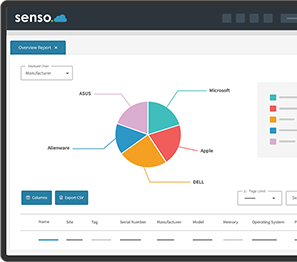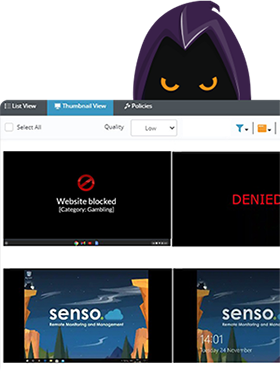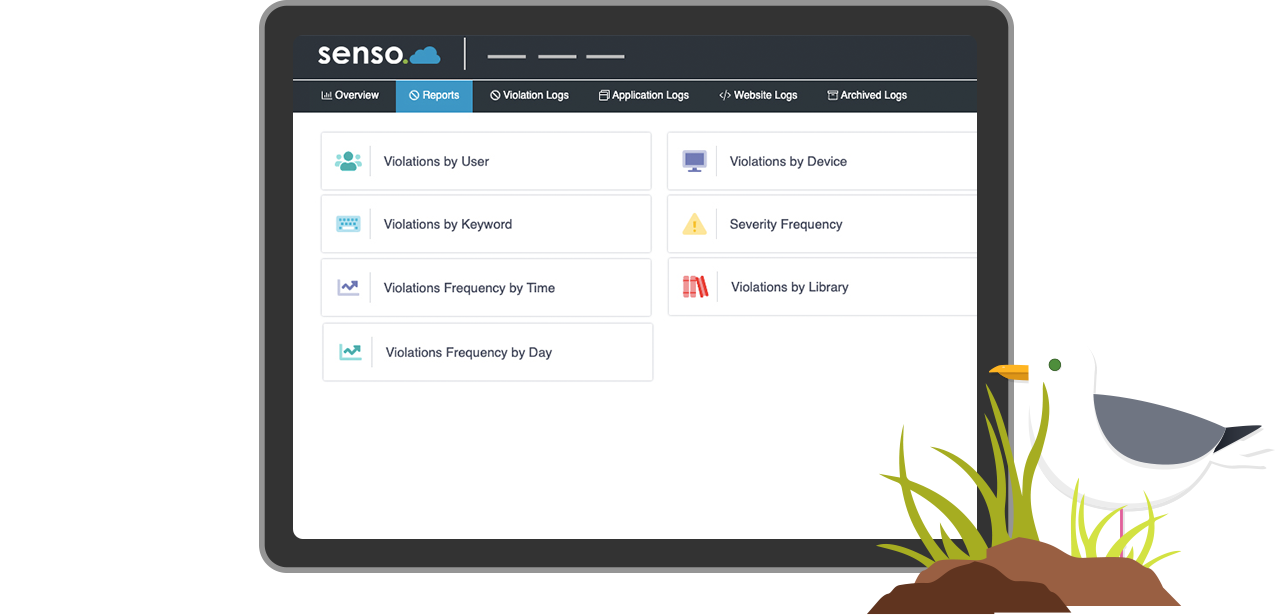View our bundles Price Plans
Our Essential Tools are included in each of our bundles.
Our Bundles
Use the buttons below to filter between operating systems and see which modules are available in each bundle.
Enterprise Cloud is our powerhouse bundle and covers all needs, from Safeguarding to monitoring and management.
 Network Cloud£3.00 / device ann.* |  | ||||||
|---|---|---|---|---|---|---|---|
| Azure AD | |||||||
| Client Updater | |||||||
| Remote Control | |||||||
| Live Thumbnail View | |||||||
| Send Message | |||||||
| Microsoft Teams Sync | |||||||
| Google Classroom Sync | |||||||
| Substitute Teacher | |||||||
| Lock Screen | - | - | |||||
| Clever Sync | - | - | |||||
| Block Sound | - | - | |||||
| Block Web | - | - | |||||
| Close Tab | - | - | |||||
| Run Website / App | - | ||||||
| Client Live Chat | - | ||||||
| Quick Question | - | - | |||||
| Send File | |||||||
| Block USB | - | - | |||||
| Command Prompt | - | - | |||||
| End Session | - | - | |||||
| Event Viewer | - | - | |||||
| MiMiC Script | - | - | |||||
| Wake on LAN | - | - | |||||
| Registry Edit | - | - | |||||
| Remote Script | - | - | |||||
| Security Check | - | - | |||||
| Service Management | - | - | |||||
| Software Search | - | - | |||||
| Speed Test | - | - | |||||
| System Info | - | - | |||||
| Task Manager | - | - | |||||
| Client Toolbar | - | ||||||
| Lock/Unlock Windows | - | - | |||||
| Block Keys | - | - | |||||
| AUP | - | - | |||||
| Logging and Blocking | - | - | |||||
| Raise Concern | - | - | |||||
| Allow Apps | - | - |

Class Cloud
- Azure AD
- Client Updater
- Remote Control
- Live Thumbnail View
- Send Message
- Microsoft Teams Sync
- Google Classroom Sync
- Substitute Teacher
- Lock Screen
- Clever Sync
- Block Sound
- Block Web
- Close Tab
- Run Website / App
- Client Live Chat
- Quick Question
- Send File
- Client Toolbar
- Allow AppsLEARN MORE

Network Cloud
£3.00 / device ann.*
- Azure AD
- Client Updater
- Remote Control
- Live Thumbnail View
- Send Message
- Microsoft Teams Sync
- Google Classroom Sync
- Substitute Teacher
- Run Website / App
- Client Live Chat
- Send File
- Block USB
- Command Prompt
- End Session
- Event Viewer
- MiMiC Script
- Wake on LAN
- Registry Edit
- Remote Script
- Security Check
- Service Management
- Software Search
- Speed Test
- System Info
- Task Manager
- Client Toolbar
- Lock/Unlock Windows
- Block KeysLEARN MORE

Safeguard Cloud
£4.50 / device ann.*
- Azure AD
- Client Updater
- Remote Control
- Live Thumbnail View
- Send Message
- Microsoft Teams Sync
- Google Classroom Sync
- Substitute Teacher
- Send File
- AUP
- Logging and Blocking
- Raise ConcernLEARN MORE

Enterprise Cloud
- Azure AD
- Client Updater
- Remote Control
- Live Thumbnail View
- Send Message
- Microsoft Teams Sync
- Google Classroom Sync
- Substitute Teacher
- Lock Screen
- Clever Sync
- Block Sound
- Block Web
- Close Tab
- Run Website / App
- Client Live Chat
- Quick Question
- Send File
- Block USB
- Command Prompt
- End Session
- Event Viewer
- MiMiC Script
- Wake on LAN
- Registry Edit
- Remote Script
- Security Check
- Service Management
- Software Search
- Speed Test
- System Info
- Task Manager
- Client Toolbar
- Lock/Unlock Windows
- Block Keys
- AUP
- Logging and Blocking
- Raise Concern
- Allow AppsLEARN MORE
Get more out of Senso
Asset Cloud
£2.00 device / year*
Monitor and manage your devices and get a clearer insight into how they are performing.
Take A Look

Senso for Microsoft Teams
£1.00 user / year*
Monitor Microsoft Teams chat for inappropriate messages and images. Get an insight into violations and more.
ExploreService Desk
Price upon request
Quickly submit issues and technical queries straight to the Senso centralised web platform via Service Desk.
Show Me
Content Filtering
£2.00 device / year*
Category based web content filter for Chromebooks and Windows.
More Info
Senso
Learn
A learning management system that allows users to access online training materials.
Explore
Safeguarding Content Pack
Senso Learn Included
Primary School
£200 / year*
Secondary School
£400 / year*
Compliance Content Pack
Senso Learn Included
Primary School
£300 / year*
Secondary School
£500 / year*
Safeguarding & Compliance Content Pack
Senso Learn Included
Primary School
£350 / year*
Secondary School
£700* / year*
Senso for iOS
Offering next level multi-platform support.
































